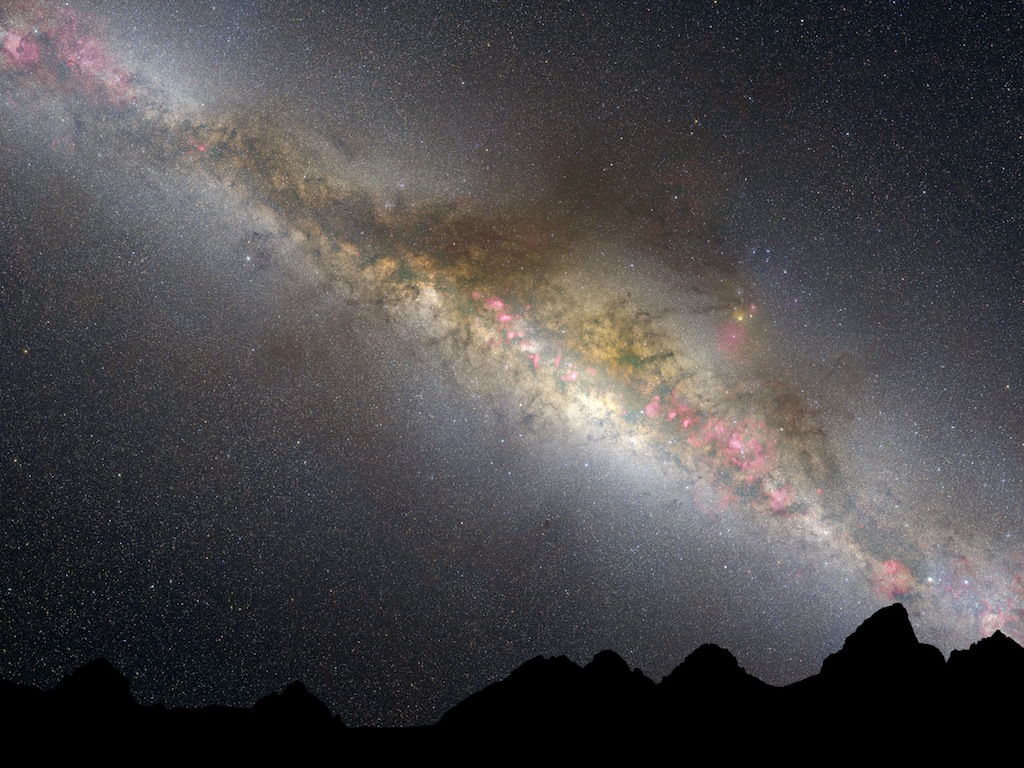
Editor's Note: This story was updated at 12:20 p.m. E.S.T. on Thursday, May 24, 2018
The night sky is littered with twinkling lights, evidence that we are just one small planet circling one tiny star in a vast universe.
Though humans have named a few constellations of stars, from Orion to the Big Dipper, in reality, there are many more stars in the universe than could ever be given names.
Just how many is not exactly clear, but it's a lot. A whole lot.
Galaxy quest
One way to get at this number is to figure out the average number of stars in a typical galaxy and multiply that by the estimated number of galaxies in the universe.
Deep-field images from the Hubble Space Telescope suggest there are 10 times more galaxies in the universe than scientists previously thought, with about 2 trillion galaxies in total, according to a study published in October 2016 in the journal Science by Christopher Conselice, a professor of astrophysics at the University of Nottingham in the U.K., and his colleagues. [Video: Our Universe Has Trillions of Galaxies]
About 100 million (or 10 to the eighth power) stars inhabit the average galaxy, according to one of the best estimates, Conselice wrote in an email to Live Science.
Get the world’s most fascinating discoveries delivered straight to your inbox.
But getting to that number was not just a matter of aiming a telescope at the sky and counting up all the twinkly bits. Only the most luminous stars in a galaxy shine brightly enough to be detected by a telescope. In 2008, for instance, the Sloan Digital Sky Survey (which maps all observable celestial objectsin one third of the sky), detected about 48 million stars, or just half of the number estimated to exist, according to a 2008 study in the Astrophysical Journal. A star as bright as our own sun in the neighboring Andromeda galaxy would not even be detected by traditional telescopes such as those used by the Sloan Digital Sky Survey, Space.com reported.
Instead, most people estimate the number of stars in a galaxy based on galactic mass. Because the universe is expanding and galaxies are moving farther apart, the light from other galaxies is, on average, slightly "red-shifted," meaning its wavelength is stretched. But because galaxies are rotating, some parts of the galaxies are actually moving closer to Earth, which means some of the light is "blue-shifted," according to Space.com. By using these light-based measurements, astronomers can make a rough estimate of how fast the galaxy is rotating, which in turn reveals its mass.
From there, scientists have to filter out all the dark matter, or matter that exerts a gravitational pull but reflects no light.
"In a typical galaxy, if you measure its mass by looking at the rotation curve, about 90 percent of that is dark matter," David Kornreich, an assistant professor at Ithaca College in New York, previously told Space.com.
Multiplying the number of galaxies — which is about 2 trillion — by the 100 million stars in the galaxy suggests there could be about 10 raised to the 20th power stars in the universe, Conselice said.
"But this could easily be a factor of 10 higher," Conselice said.
Jeanna Bryner contributed reporting to this article.
Editor's Note: This story was updated to correct the scientific notation for the number of stars in the galaxy. 100 million is 10 to the eighth power, not 10 to the seventh power. The total number of stars in the universe is therefore 10 to the 20th power, not 10 to the 19th power.
Original article on Live Science.

Tia is the editor-in-chief (premium) and was formerly managing editor and senior writer for Live Science. Her work has appeared in Scientific American, Wired.com, Science News and other outlets. She holds a master's degree in bioengineering from the University of Washington, a graduate certificate in science writing from UC Santa Cruz and a bachelor's degree in mechanical engineering from the University of Texas at Austin. Tia was part of a team at the Milwaukee Journal Sentinel that published the Empty Cradles series on preterm births, which won multiple awards, including the 2012 Casey Medal for Meritorious Journalism.
 Live Science Plus
Live Science Plus






